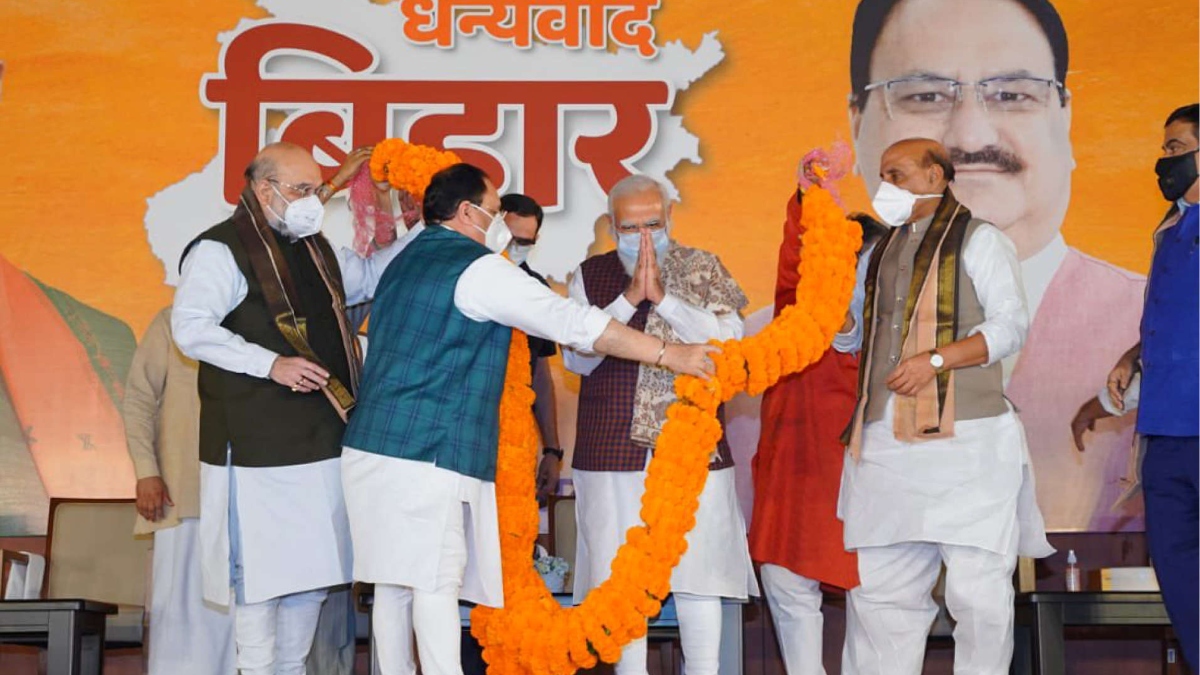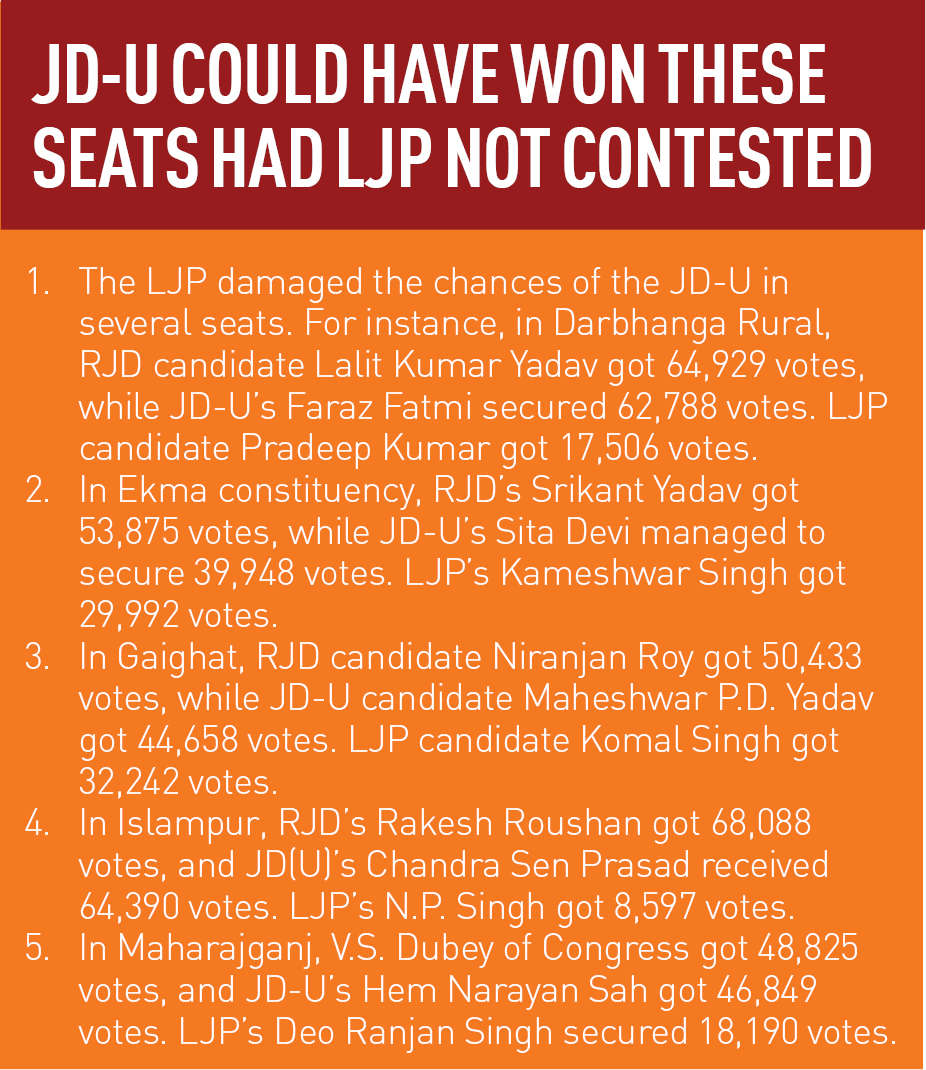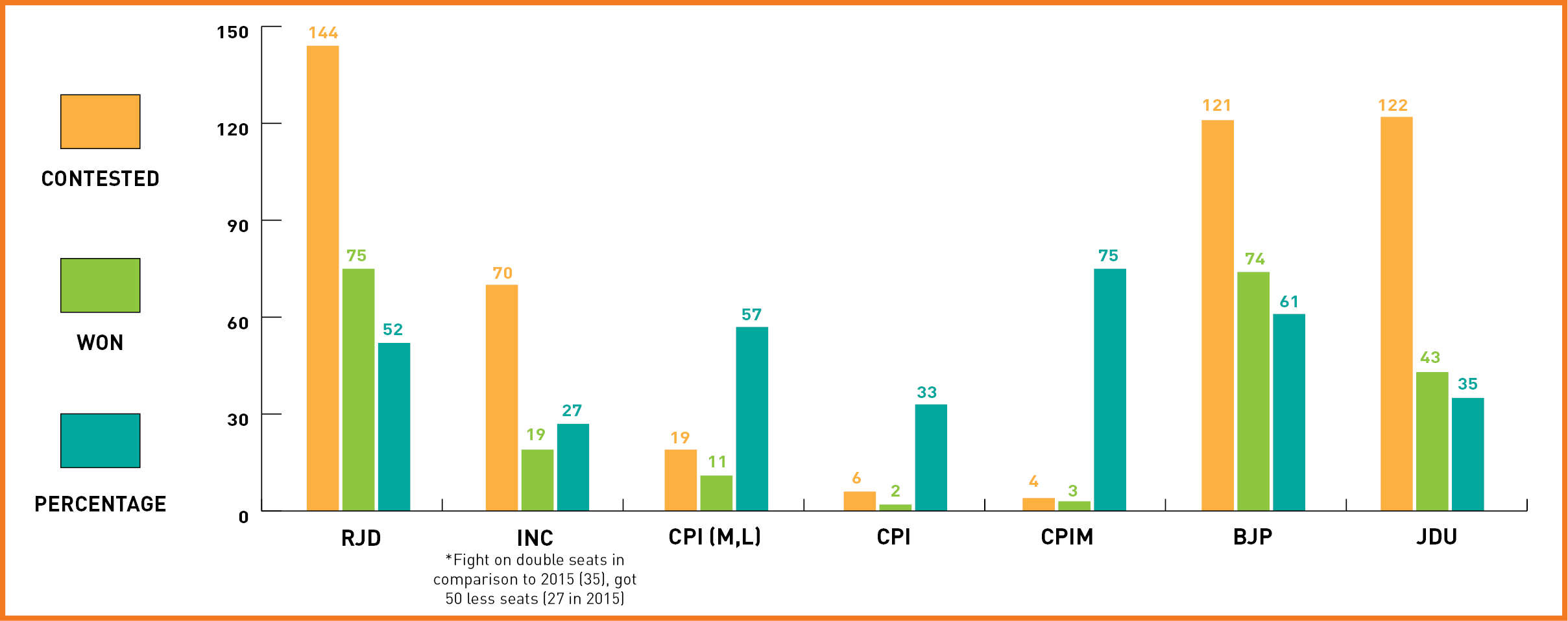


It now transpires the crowds that gathered for RJD leader Tejashwi Yadav campaigning in the Bihar elections were not a mirage. The young leader single-handedly managed to convert the huge crowd of his supporters into massive votes for his party. He has achieved a commendable feat of making the RJD the single-largest party in the state. But it is now clear that he failed to withstand the juggernaut…the towering presence of Prime Minister Narendra Modi, which turned things around in the state elections.
The Bihar Assembly polls were one of the most keenly contested elections in recent times. The overall Bihar and by-election results have proved that the BJP has retained its grip and continues to go full throttle. The results have not only shown that most exit polls could go awry. But they have also thrown up some very interesting facts, which strengthen the democratic values.
Tejashwi’s prospects were marred by the strong inroads made by Asaduddin Owaisi’s AIMIM party, yet his party bagged a respectable 75 seats. The AIMM ensured that the RJD’s Muslim-Yadav formula did not work wherever it contested. The Congress turned out to be a spoilsport for the Mahagatbandhan. It contested 70 seats, and slipped from winning 27 seats in the 2015 elections to 19 seats this time.
Tejashwi’s RJD was undercut by Owaisi’s AIMM, which bagged five seats and now has the distinction of becoming a Muslim party perhaps having biggest geographical reach in India. If one compares the AIMM’s performance with the LJP, the former has performed far better given the fact that the AIMM contested from limited 24 seats. But in politics defeat is a relative term.
Ultimately, it was the BJP’s meticulous strategy which worked and helped it get a strong 74 seats, one seat short of becoming the single-largest party. PM Modi was strategically fielded for holding at least 12 election rallies, which this time around made all the difference.
Chirag Paswan’s LJP despite all efforts did not make any significant dent; it did huge damage to Nitish Kumar’s JD-U by marring its prospects in at least 36 seats. The party may not have damaged Tejashwi’s prospects but it certainly ensured that the JD-U remained under big brother BJP’s patronage. Last Assembly results were reversed in favour of the BJP and away from the JDU. Thus further consolidating the BJP’s position.
The LJP prevented the anti-incumbency votes from going into the grand alliance kitty. The party fielded candidates against JD-U candidates. Meanwhile, a large number of BJP rebel leaders landed on the ticket of the LJP. There were rumours that the BJP had devised this strategy to prevent anti-incumbency votes from going into the Opposition camp. Before the election notification was issued, there was a word that there was some hidden understanding between the LJP and the BJP in this regard. These speculations got a boost when the LJP strategised with the BJP and against Nitish Kumar.
The LJP has won one seat, Matihani, where it has defeated the JD-U. JD-U’s Sita Devi lost from Ekma to Srikant Yadav of RJD by 14,000 votes. Here LJP candidate Kameshwar Singh Munna got around 30,000 votes.
The JD-U has been defeated by the RJD by 2,773 votes from Aloli and the LJP got 26,000 votes. In Maharajganj, the Congress defeated the JD-U by 1,976 votes, while the LJP got more than 18,000 votes. The JD-U lost 1,500 from Rajapakad and LJP got 24,000 votes there. Similarly, JD(U) lost in Jhagadia, Obra, Gaighat, Mahanar, Chenari, Jamalpur, Jagdishpur, Mahua, Darbhanga Rural, Sahebpur Kamal by less than the votes of the LJP.

LJP candidate Rajendra Singh from Dinara finished second and RJD won. JD-U moved to number three here. If you add the votes of LJP and JD-U, it is 19,000 more than the vote of RJD. If you add the votes of the LJP and the JD-U in Raghunathpur, then it becomes nine thousand more than RJD. However, this seat has gone to RJD. JD-U has lost by nearly 3,500 from Islampur and the LJP candidate has got more than 8,500 votes.
LJP chief Chirag Paswan appeared before the media but refused to accept his defeat and said defeat is a relative term. He said that his party has got new strength in Bihar, and the party organisation has been strengthened.
Interestingly Nitish Kumar despite his party sliding from 71 seats to 43 will be wearing the crown of Chief Minister of Bihar for the fourth time. Thanks to BJP, which has decided to stick to its pre-poll promise of making him the chief minister irrespective of his party’s performance. He is certainly not on as strong a wicket as he would have expected to be.
The results also showed that BJP can counter anti-incumbency of any type through its mass appeal. It is capable of saving their governments despite all odds. It has shown that BJP is bound to win close contests as it has the strategy in place and art of controlling the game of both sides.
PM Modi’s address to BJP workers on Wednesday summed it up succinctly. He said intention, dedication and development are the mantra for winning elections. Parties following dynastic parties will not succeed. Results have shown people’s basic issues have to be taken care of.
Observers also read another interesting fact in the results. Left performance and high strike rate reminds us that Bihar remains the social laboratory of Marxism in India. Any new government will have to look into the issues of land and labour, otherwise growing strength of CPI ML has the capability of creating a much larger cadre from unemployed and socially backward youth.
Simply writing off Bihar as a landlocked state which cannot match up with industrially developing states of the country will not work. Results have shown that Tejashwi’s job creation pitch worked and therefore the new government will have to keep that in mind and work towards creating employment opportunities.
Retaining the power in Bihar was crucial for the BJP due to many counts. One, it was the first election after the outbreak of Covid-19 and therefore an acid test for the BJP’s overall performance and its popularity. Second, it will make things easier for the party to go to polls in West Bengal with much more strength after winning Bihar. So it’s all well that ends well for BJP.
